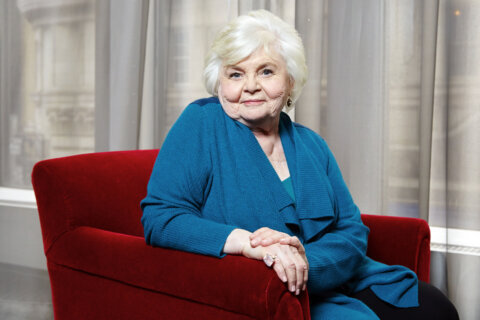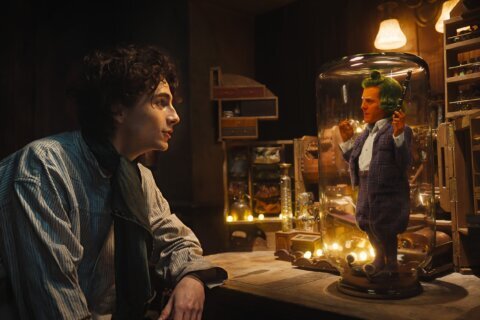WASHINGTON – Very few filmmakers qualify as modern-day auteurs, a.k.a. authors whose signature style drips from every frame. Many of today’s filmmakers are either invisible (merely servicing the script with no discernible visual icons) or overly flashy (with a lot of flair but not much to say). It takes that rare voice to demand our attention through the highs and lows of a career by weaving consistent trademarks toward a larger body of work that’s significant in its totality.
Wes Anderson is one of those filmmakers.
Since his “Bottle Rocket” (1996) debut, he’s had a remarkable trajectory, from the coming-of-age gem “Rushmore” (1998) to the masterpiece family dramedy “The Royal Tenenbaums” (2001), from the notorious stumble “The Life Aquatic with Steve Zissou” (2004) to the baggage-shedding recovery of “The Darjeeling Limited” (2007), from the fantastic stop-motion interlude “Fantastic Mr. Fox” (2009) to the glorious ode to young love at summer camp “Moonrise Kingdom” (2012).
Friday, his eighth feature film arrives with raving anticipation from his most hardcore fans and reluctant timidity from more casual fans who are slowly warming up to his style.
Based on the writings of Stefan Zweig, “The Grand Budapest Hotel” explores a giant European hotel in the fictional country of Zubrowka set between the two World Wars. The place might as well be Neushwanstein with its giant perch atop the German mountains where Anderson shot on location. It’s here that the hotel’s mysterious concierge M. Gustave (Ralph Fiennes) mentors a young lobby boy named Zero (Tony Revolori), who helps him snatch a priceless painting called “Boy With Apple” amid a dispute over the inheritance of Gustove’s late elderly lover, Madame D (Tilda Swinton).
While “Monuments Men” (2 out of 4 stars) couldn’t decide between drama or comedy in its wartime tale of stolen artwork, Anderson goes full throttle into screwball farce, from a hilarious jailbreak that recalls “The Great Escape” (1963) to a stop-motion skiing finale that recalls the climax of Chaplin’s “The Gold Rush” (1925). In between, there are numerous laugh- out-loud moments, including the best series of compounding jokes since “Austin Powers,” as various hotel concierges call one another, each interrupting a vital task that’s handed to a protege with the instruction: “Take over.”
While the overall tone follows the whimsy of such “take over” jokes, Anderson is keenly aware of the literal “takeover” that’s about to happen, with melancholic hints at the coming of Hitler and Stalin. Anderson nimbly walks the line between comedy and tragedy thanks to his clever casting swap from recent Holocaust flicks. For his hero, he casts the villain from “Schindler’s List” (1993) — Ralph Fiennes. For his villain, he casts the hero of “The Pianist” (2002) — Adrien Brody. The juxtaposition is a fun reminder to viewers that the same actor can just as easily play the other side of the coin.
Fiennes is a real treat to watch, showing a charming alternative to his more dramatic roles like Charles Van Doren in “Quiz Show” (1994) or Voldemort in “Harry Potter and the Deathly Hallows” (2010). His comedic timing makes for a number of side-splitting exchanges with Young Zero:
GUSTAVE: “She was dynamite in the sack.”
ZERO: “She was 84.”
GUSTAVE:: “I’ve had older.”
This mentor-mentee relationship is the glue that carries an otherwise breakneck pace with famous faces appearing with reckless abandon. The deep cast includes Edward Norton, Jeff Goldblum, Harvey Keitel, Jude Law, F. Murray Abraham, Owen Wilson, Jason Schwartzman and Bill Murray.
But wait, there’s more. Willem Dafoe steals the show as Brody’s S.S.-style henchman who sucker-punches anyone in his path, unbuttons a special pouch on his leather jacket for a bottle of booze, and pursues Goldblum through a museum with “nail-biting” results.
Yet, like all of Anderson’s movies, the biggest “character” is his own directorial style, with a camera that rigidly adheres to vertical and horizontal motions with the deliberate precision of dollies, tilts and smash zooms. There are no loosey-goosey, shaky-cam moves through the cinematic space. It’s all up, down, left, right, forward and back like a chess piece contemplating its next move.
These distinct camera moves require a lush visual space in which to operate, and “Grand Budapest Hotel” offers his most lavish set design yet, from the bright red walls of the elevator interior, to the dollhouse placement of lobby furniture shown in pristine extreme high angles (i.e. King Vidor’s “The Crowd”). This display of unique eye candy puts Anderson in the same league as Stanley Kubrick and Tim Burton when it comes to a directorial eye for art direction.
Still, Wes Anderson’s best quality is his Woody Allen-style playfulness with the frame (borders of the screen), where comedic surprises lurk just off-screen. At any moment, we can whip pan away from a serious monologue to a kid with a squirt gun, exposing the “cinematic illusion.” Or, we can dolly slightly to reveal a hidden door that neither we, nor the characters, could see before. This, in itself, is a commentary on the power of cinema via the director’s ability to control what we see.
Speaking of the frame, Anderson uses a different “aspect ratio” (screen size) for each timeline in this “story within a story within a story.” We start with a 2.35 ratio (rectangular widescreen) as a writer known as “The Author” (Tom Wilkinson) introduces the story. We then switch to a 1.85 ratio (a fatter rectangle) as we flash back to see The Author as a young man (Jude Law), interviewing the hotel’s owner Mr. Moustafa (F. Murray Abraham). Finally, we switch to a 1.33 ratio (a squarish 4:3 screen like your old TV set) as we flash back even further to see Moustafa’s younger self, Zero (Revolori), befriend Gustave (Fiennes). We stay in this ratio for most of the movie.
The jumping from timeline to timeline is admirably ambitious, as Anderson throws screenwriting conventions out the window (he literally throws a cat out the window to mock Blake Snyder’s “Save the Cat” book on screenwriting structure). But for all its surface-level panache, “Budapest Hotel” suffers from a sloppy narrative that barely attempts deeper meanings.
Many want to compare the film to Billy Wilder’s favorite filmmaker Ernst Lubitsch, who satirized Communism in “Ninotchka” (1939), spoofed Nazism in “To Be or Not to Be” (1942) and used Budapest as a backdrop for “The Shop Around the Corner” (1940). While “Budapest Hotel” hits similar themes, Anderson must continue honing his craft before he can rival The Lubitsch Touch.
Anderson’s creativity unleashes a flourish of fascinating characters, quirky dialogue, meticulous set design and masterful cinematic language. But there’s not much “there” there, compared to Lubitsch’s “Trouble in Paradise (1932), where a European thief “M. Laval” is a direct inspiration for Anderson’s “M. Gustave,” just like another 1932 film, “Grand Hotel,” is an inspiration for Anderson’s title.
And so, “Budapest” will conjure fond memories among film academics and coast on Anderson’s “twee” reputation, winning awards like the Silver Bear at the Berlin Film Festival. But to these eyes, it barely cracks the Top 5 of his eight-film body of work, behind “The Royal Tenenbaums,” “Rushmore,” “Moonrise Kingdom” and “Fantastic Mr. Fox,” in that order.
If you’ve never seen a Wes Anderson film, watch these first. “The Grand Budapest Hotel” is a solid addition to the Anderson canon that’s worth seeing once. The film will ingrain certain images in your head, from the pink boxes of Mindle’s chocolate, to the Mexico-shaped birthmark on a girlfriend’s cheek. Then, as the credits roll, the final quote will echo my thoughts on the movie itself: “It’s an enchanting old ruin, but I never managed to see it again.”
★ ★ ★
The above rating is based on a 4-star scale. Click here to see where the film ranks among the year’s best. Follow WTOP Film Critic Jason Fraley on Twitter @JFrayWTOP, read his blog The Film Spectrum or listen Friday mornings on 103.5 FM.
Follow @WTOP and WTOP Entertainment on Twitter and WTOP on Facebook.








